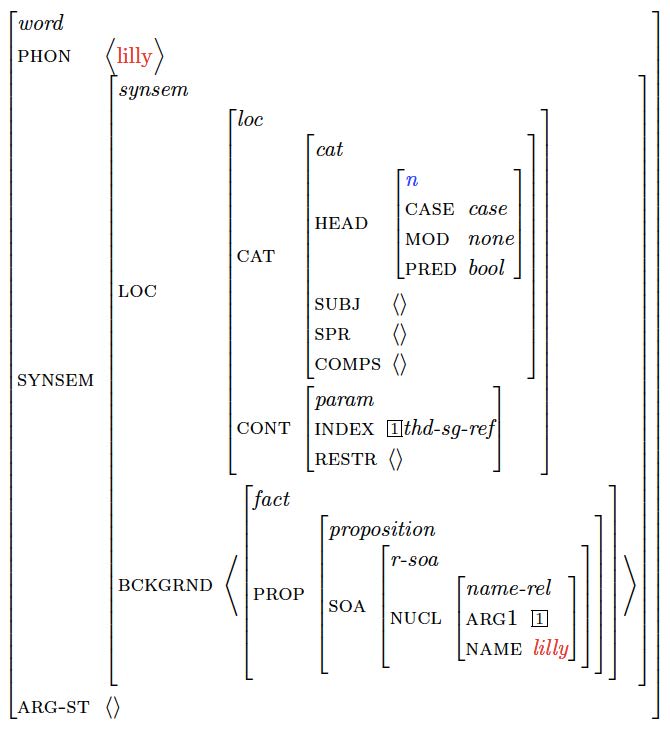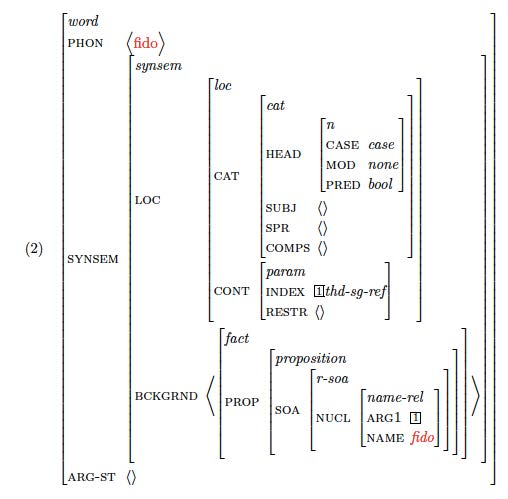HPSG
From a syntactic point of view, the smallest constituents (= pieces) of sentences are words. So, it is natural that our syntactic journey begins with words. If you think about it, you need to know a lot about a word in order to use it grammatically:
- its pronunciation
- its meaning
- its part of speech
- its valence, i.e. the number and type of subjects and objects it combines with
- and perhaps its inflection (things like case, tense, and agreement).
If a formal, i.e. precise grammar is supposed to model what speakers who use the grammar know about their language, then the grammar will have to precisely represent all the information in the list above as well. So, let us look at how Head-Driven Phrase Structure Grammar represents lexical information (= information about words). We will see that similar words have very similar lexical entries.
Words
Let us look at a fairly simple class of words, namely names:
We put two words next to each other, the word Lilly on the left and the word Fido on the right:
That looks like a lot of information, but recall that in the previous section we recognized that speakers know much about the words of their language!
So, let us go through the list we made earlier and see where and how each type of information is contained in the structures above. Since both words are names, we would expect the two representations to have something in common; but since they are different names, we would also expect them not to be completely identical.
In the top left of both representations, the word word captures the fact that Lilly and Fido are both words, rather than phrases or sentences. Let's now go through the list of word properties that we collected above
We begin with the first item on the list: speakers know the pronunciation of the words of their language. Is this information contained in the two representations above and if so, where? You will probably have spotted the attribute PHON in both words. On the left it takes the value <Lilly>, whereas on the right it takes the value <Fido>.

